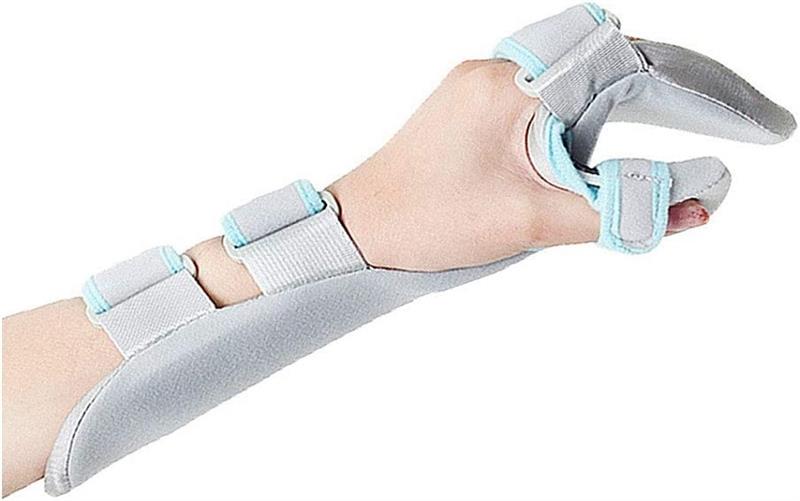
Arthritis is a condition that causes inflammation and pain in the joints, and orthoses are medical devices that can help alleviate the symptoms of arthritis by providing support and stability to the affected joints. Orthoses can be custom-made or prefabricated and come in various shapes and sizes. They can be used to immobilize a joint or to promote movement depending on the type and severity of arthritis. Orthoses are generally safe, and their side effects are usually mild and temporary.
They can be used in combination with other arthritis treatments, and their care and maintenance depend on the type and materials used. There are many types of orthoses for arthritis treatment, such as wrist braces, knee braces, ankle braces, and foot orthotics. The right orthoses for arthritis treatment depend on the location and severity of arthritis.
More than 100 different kinds of joint diseases are included in the very common disorder known as arthritis, which can affect people of all ages.We offer you a brief overview of arthritis, how it is identified, and how orthoses for arthritis can benefit those who experience this common but frequently misdiagnosed joint condition.
1. What exactly is arthritis? What distinguishes rheumatoid arthritis from osteoarthritis?
A general word for joint inflammation is arthritis. Conditions that result in joint discomfort, stiffness, swelling, and other associated symptoms are referred to by this term.
The most prevalent type of arthritis is osteoarthritis. Osteoarthritis is a condition in which the cartilage in the joints deteriorates, allowing the bones to rub against one another and resulting in discomfort and stiffness.
In the case of rheumatoid arthritis, the body creates excessive inflammation in and around the joints, which results in deformities. In severe instances, the disease process may result in joint destruction as well as tendon rupture or tendon subluxation.
2. What signs of rheumatism are most typical?
- Restricted range of motion or strange movement in the injured joint
- Discomfort in the morning that lasts for at least 30 minutes
- Tenderness
- Weakness
- Aching joints
3. What parts are going to be impacted?
The tiny finger joints and/or the base of the thumb are frequently affected by osteoarthritis in the hand:
- Bouchard's nodes are bony lumps that can harm the Proximal Interphalangeal (PIP) joint.
- Heberden's nodes may have an impact on the Distal Interphalangeal (DIP) joint.
- Basilar joint gout may impact the thumb's carpometacarpal (CMC) joint.
The metacarpal (MCP) joints of the hand and the wrist are frequently affected by rheumatoid arthritis.
Finger PIP joints may exhibit the following:
- The malformation of Boutonniere.
- The crooked neck of the Swan.
4. How can orthotics be helpful?
By preventing the rubbing of bone against bone, an orthosis that immobilises the injured joints can reduce discomfort. Orthoses can help hold a weak joint in its normal alignment and provide stability, avoiding undesirable postures.
Orthoses can also provide a cosy position for the hand and wrist to rest in at night, easing symptoms and promoting sound slumber.
5. What orthopaedic devices are suggested for arthritis?
Depending on the parts that are harmed.
Patients with wrist discomfort and/or hand pain can benefit from wrist orthoses and resting hand orthoses.
The root of the thumb arthritis can be treated with thumb orthoses.
Individual finger immobilisation orthoses or specialised orthoses created to rectify a swan neck or boutonniere deformity can both be beneficial for the fingers.
6. What are the objectives of using an orthosis?
The orthosis's objectives should be patient-specific and could consist of the following:
relieve the symptoms and the discomfort.
Position yourself better for practical chores.
bolster a fragile joint.
reposition a joint malformation.
limit irrational joint mobility.
7. What standards are suggested for the creation of orthoses for arthritic patients?
The particular orthosis should have a straightforward design and be fairly simple to put on and take off. The orthosis should only cover the affected joints and should not be too bulky or weighty.
Each patient's orthosis needs to be created specifically for them.
Check on your patient from time to time to make sure the orthosis is still fitting them properly.
8. Which Orfit components are best suited for arthritis patients?
When compared to other thermoplastic materials, Orfilight NS and Orfizip Light NS are 30% lighter in weight while providing excellent support and placement. An orthosis that is lighter and more comfy results. All Orfilight items come in a variety of thicknesses and perforation styles.
Any form of arthritis can be effectively treated with Orficast and Orficast More. These flexible, lightweight fabrics can be used to create a variety of orthoses and have a feel similar to fabric. Orthoses made of Orficast will even fit comfortably under mittens.
9. Does using an orthosis relieve symptoms right away?
Patients who experience severe symptoms should originally wear the orthosis constantly. Although wearing the orthosis alone won't provide instant relief, the patient will eventually notice a decrease in their symptoms. Due to the immobility the orthosis provides, the joint inflammation may lessen a little. Patients may experience less pain and swell. After a few weeks, they might only need to use the orthosis when their symptoms suddenly worsen rather than all the time.
10. In addition to pain relief, what other advantages come from having an orthosis?
The patient may be able to perform an action that they had previously been unable to perform due to pain, such as holding a knitting needle or paintbrush, after donning the orthosis. Greater grasp and release will be possible with the aid of an orthosis that positions the fingertips away from the boutonniere or swan neck deformity. Ultimately, an orthosis can help to prevent an abnormal posture from becoming worse.